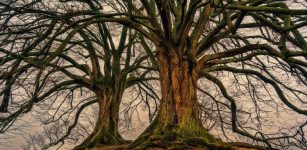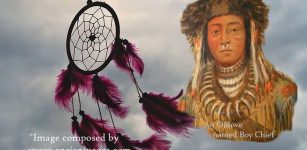Mystery Of The Lavau Celtic Prince And The Beautiful Ancient Artifacts Hidden In His 2,500-Year-Old Tomb
AncientPages.com - Some years ago, archaeologists discovered an exceptional tomb of a Celtic Prince. The 2,500-year tomb was unearthed on the outskirts of Lavau in France’s Champagne region.
Inside the tomb researchers from National Institute of Preventive Archaeology (INRAP) found remarkable ancient Greek and Etruscan artifacts, but this was not the end of the story. It soon became clear that the tomb of the Lavau Celtic Prince had many hidden secrets.
One Of The Greatest Archaeological Discoveries In France
The French state ordered a more detailed exploration of the area and many more priceless artifacts were unearthed in the vicinity. Soon, archaeologists found magnificent artifacts from the 5th century B.C., including a bronze cauldron ornamented with the head of the god Dionysus.
The skeleton of the Celtic prince was also unearthed. He was laid out on his chariot, still wearing beautiful jewelry. He who was still remains a mystery, but this particular discovery is considered one of the most important archaeological discovery made in France in recent decades - comparable to the 1953's discovery of grave belonging to the so-called 'Lady of Vix'.
Artifacts Produced By Skilled Ancient Craftsmen
Examination of the Lavau Celtic Prince’s tomb has been going on for two years now, ever since it was unearthed in 2015. The artifacts have been analyzed in a laboratory and the first results are reaching the public. Using sing X-ray radiography and tomography as well as 3D photography, scientists hope the artifacts can shed light on Iron Age European trade and unravel the identity of the Lavau Celtic Prince.
One of the goals is to understand the influences from different cultures in the way the ancient objects were decorated. For instance, a large jar used to pour wine is made up of Greek-style ceramic and decorated with golden Etruscan motifs and silver Celtic designs. Hopefully, 3D photography and chemical analyses can shed more light on the origin of the ancient artifacts.
See also:
Unique 2,500-Year-Old Celtic Jewelry – Oldest Iron Age Gold Treasure Ever Found In Britain
Remarkable Le Catillon II Hoard – World’s Largest Collection Of Celtic Coins And Jewellery
Does Celtic Art Have Links With Iron Age Art Of The Eurasian Steppes?
Scientists have so far been able to confirm that the artifacts discovered in the tom of the Celtic prince were manufactured by various ancient cultures. X-ray radiography shows that the belt worn by the prince is decorated with threads of silver, assembled together to form Celtic motifs. This is a unique object, as none similar have ever been recovered elsewhere before.
Furthermore, an analysis of the metals in the bronze cauldron - one of the most elaborate artifacts recovered from the grave - suggests that the people who created it perfectly mastered smelting and engraving techniques.
Cultural and economic interactions were taking place between the Celtic and Mediterranean worlds at the time the Lavau Celtic Prince was alive.
It has also been established beyond doubt that the person buried in the grave was male and not a female as some previously suggested. Researchers plan to continue the examination of the tombs, skeleton and artifacts until 2019, to try and find out more about the prince's identity and to learn more about the origins of all the objects he had taken with him in the afterlife.
AncientPages.com
Expand for references
More From Ancient Pages
-
 Oldest Known Projectile Points In The Americas Discovered In Idaho
Archaeology | Dec 23, 2022
Oldest Known Projectile Points In The Americas Discovered In Idaho
Archaeology | Dec 23, 2022 -
 3,500-Year-Old Egyptian Tomb Of Guardian Of Pharaoh’s Secret Archive Discovered In Saqqara
Archaeology | May 7, 2022
3,500-Year-Old Egyptian Tomb Of Guardian Of Pharaoh’s Secret Archive Discovered In Saqqara
Archaeology | May 7, 2022 -
 Beautiful Legend Of Giant Olentzero Who Brings Christmas Presents To Basque Children
Christmas Traditions | Dec 19, 2024
Beautiful Legend Of Giant Olentzero Who Brings Christmas Presents To Basque Children
Christmas Traditions | Dec 19, 2024 -
 10 Ancient Fortresses Of Historical Importance
Civilizations | Jan 11, 2016
10 Ancient Fortresses Of Historical Importance
Civilizations | Jan 11, 2016 -
 The Iron Man In The Kottenforst And Other Puzzling Ancient Artifacts Of Unknown Origin And Purpose
Ancient Mysteries | Mar 10, 2014
The Iron Man In The Kottenforst And Other Puzzling Ancient Artifacts Of Unknown Origin And Purpose
Ancient Mysteries | Mar 10, 2014 -
 On This Day In History: Treaty Of Picquigny – Negotiations Between England And France – On Aug 29, 1475
News | Aug 29, 2017
On This Day In History: Treaty Of Picquigny – Negotiations Between England And France – On Aug 29, 1475
News | Aug 29, 2017 -
 Unsolved Enigma Of The Lost Ancient City In The Kalahari Desert
Ancient Mysteries | Aug 29, 2015
Unsolved Enigma Of The Lost Ancient City In The Kalahari Desert
Ancient Mysteries | Aug 29, 2015 -
 Ancient Hand Grenades: Explosive Weapons In Medieval Jerusalem During Crusades
Archaeology | Apr 26, 2022
Ancient Hand Grenades: Explosive Weapons In Medieval Jerusalem During Crusades
Archaeology | Apr 26, 2022 -
 South American Musical Instruments Reflect Population Relationships – Archaeological Records Reveal
Archaeology | Sep 20, 2021
South American Musical Instruments Reflect Population Relationships – Archaeological Records Reveal
Archaeology | Sep 20, 2021 -
 Why Human Languages Can Be Likened To Branches On A Tree And Help Finding A Single Common Ancestor
Linguistic Discoveries | Sep 11, 2021
Why Human Languages Can Be Likened To Branches On A Tree And Help Finding A Single Common Ancestor
Linguistic Discoveries | Sep 11, 2021 -
 10 Christian Symbols Explained
Ancient Symbols | Jul 28, 2018
10 Christian Symbols Explained
Ancient Symbols | Jul 28, 2018 -
 The First ‘Viking’ Was A Bronze Age Man
Civilizations | Jul 26, 2024
The First ‘Viking’ Was A Bronze Age Man
Civilizations | Jul 26, 2024 -
 Unexpected Underwater Discovery Of 50,000 Ancient Coins Off Sardinia Hints At Hidden Shipwreck
Archaeology | Nov 10, 2023
Unexpected Underwater Discovery Of 50,000 Ancient Coins Off Sardinia Hints At Hidden Shipwreck
Archaeology | Nov 10, 2023 -
 New DNA Study Reveals How The Black Rat Colonized Europe In The Roman And Medieval Periods
Archaeology | May 6, 2022
New DNA Study Reveals How The Black Rat Colonized Europe In The Roman And Medieval Periods
Archaeology | May 6, 2022 -
 Dreamcatcher: Powerful Protective Amulet Of North American Indian People
Ancient Traditions And Customs | Mar 20, 2020
Dreamcatcher: Powerful Protective Amulet Of North American Indian People
Ancient Traditions And Customs | Mar 20, 2020 -
 Krampus Celebrations Are Becoming Dangerous – Historian Warns
Ancient Traditions And Customs | Dec 10, 2019
Krampus Celebrations Are Becoming Dangerous – Historian Warns
Ancient Traditions And Customs | Dec 10, 2019 -
 2,000-Year-Old Trade Center: Brick Structure, A Vishnu Sculpture Among Findings In Andhra Pradesh
Archaeology | Nov 6, 2019
2,000-Year-Old Trade Center: Brick Structure, A Vishnu Sculpture Among Findings In Andhra Pradesh
Archaeology | Nov 6, 2019 -
 Valkyries Sigrdriva And Brynhildr: Brave Warriors Who Were Punished By God Odin In Norse And Germanic Mythology
Featured Stories | Apr 4, 2017
Valkyries Sigrdriva And Brynhildr: Brave Warriors Who Were Punished By God Odin In Norse And Germanic Mythology
Featured Stories | Apr 4, 2017 -
 Oldest Bead In America Discovered At La Prele Mammoth Site, Wyoming
Archaeology | Feb 13, 2024
Oldest Bead In America Discovered At La Prele Mammoth Site, Wyoming
Archaeology | Feb 13, 2024 -
 The Hittites, Mysterious People Of A Thousand Gods – Collapse Of The Hittite Empire
News | Sep 9, 2015
The Hittites, Mysterious People Of A Thousand Gods – Collapse Of The Hittite Empire
News | Sep 9, 2015




